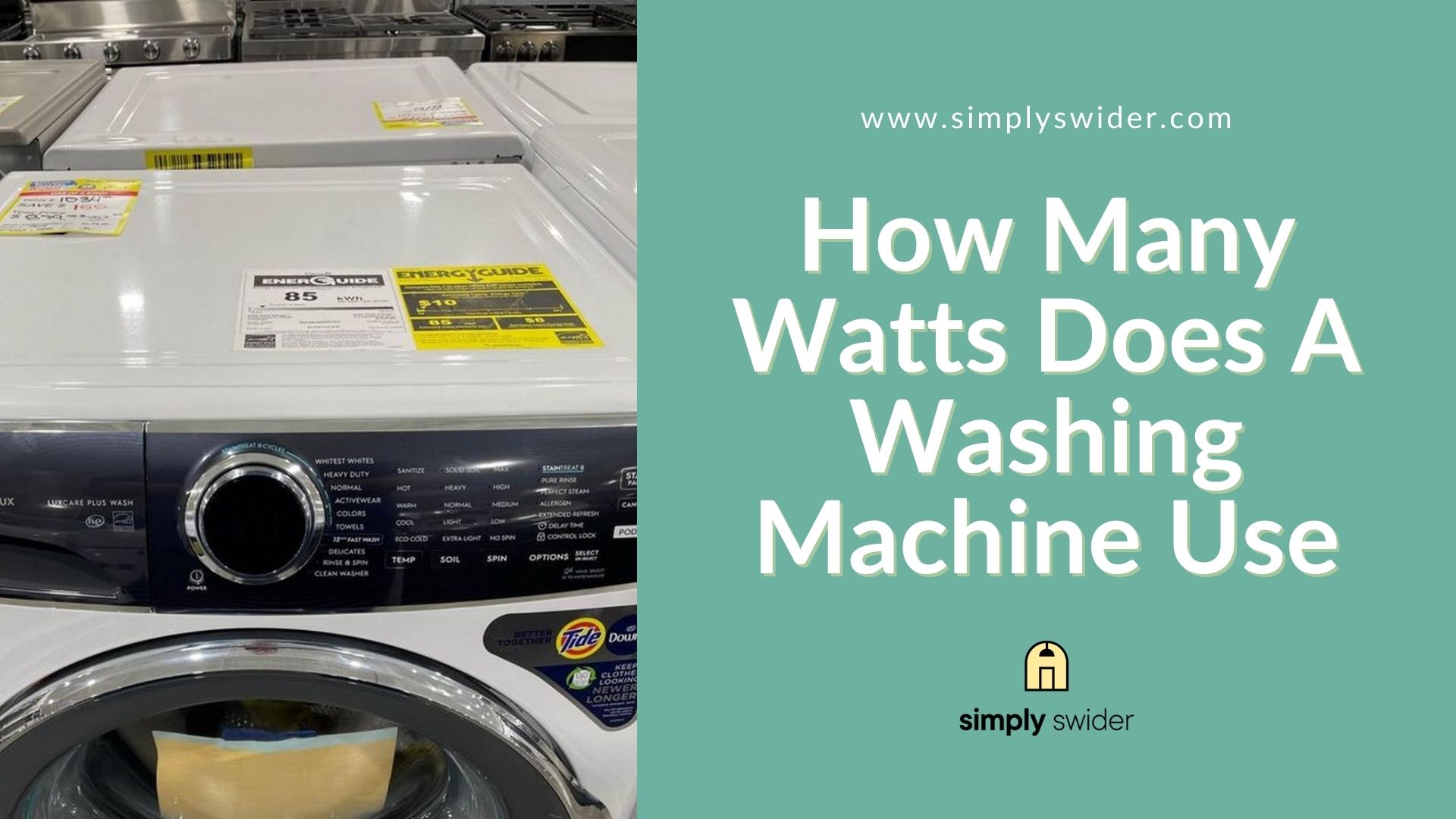Did you know?
The energy consumption based on an average washing machine is about 400 – 1500 Watts.
That’s right.
Also, the amperage and voltage of your washing machine determine the exact wattage.
Now:
The energy consumption of your washing machine may be greater or less. Your washing machine’s exact wattage depends on the brand and the size of your laundry load.
In addition:
The capacity of your washing machine determines how much energy it uses. The bigger your washing machine, the more watts it needs for each hour of use.
Usually:
A washing machine uses approximately 90% of the total energy consumed to heat water and completes a wash cycle in 50-60 minutes.
So how can you tell how much energy your washing machine is using?
In this article, we will guide you on how to calculate the exact watts your washing machine is using, as well as the total energy cost per year.
Additionally:
We would offer you recommendations on how to reduce the energy consumed by your washing machine, which would lower your energy cost and enable you to implement energy-saving measures.
Shall we?
Table of Contents
How Many Watts Does a Washing Machine Use?
The number of watts that your washing machine uses depends on the brand of your washing machine and the wash cycle you use. However, an average washing machine uses about 400 to 1500 watts per hour. The energy your washing machine would use over time might increase depending on how frequently you operate it.
How to Calculate the Energy Consumption of Your Washing Machine
Get this:
The energy consumption of a washing machine is measured in kilowatts per hour (kWh). To calculate the exact amount of energy that your washing machine uses, you can follow these simple steps:
Step 1: Find Your Washing Machine’s Power Rate
Find the power rating of your washing machine by consulting the yellow EnergyGuide label on your washing machine. It is also measured in kilowatts per hour (kWh)
Tip: The EnergyGuide Label is different for every washing machine model. You can also find the exact power rating for your washing machine in your owner’s manual or the manufacturer’s website. But here’s what the EnergyGuide should look like:
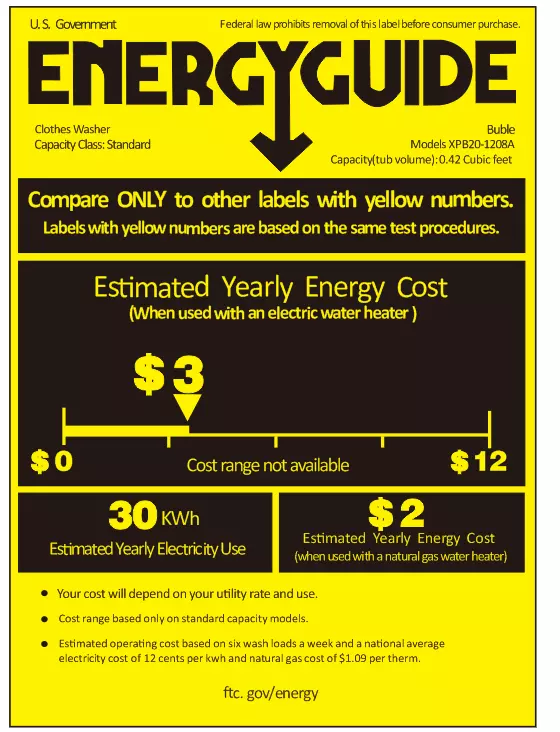
Step 2: Calculate Yearly Laundry Load
Estimate how many times you use the washing machine in a year. You should multiply the number of loads you wash in a week by the total number of weeks in a year.
For instance:
We would be considering a washing machine with power ratings of 340 watts and an average wash cycle time of 50 minutes.
So:
If you do four loads of laundry every week, multiply four loads by 52 weeks: 4 x 52 = 208 laundry loads per year.
Step 3: Calculate Energy Consumption
First off:
Divide the power rating of your washing machine by 60 seconds to determine the watts per minute: 340/60 = 5.67 watts/minute.
Then:
Multiply the watts per minute by the duration of your wash cycle: 5.67 x 50 = 283.30 watts. This is the watt per load.
Finally:
Multiply the watt per load by the number of loads you wash in a year: 283.30 x 208 = 58933.33 watts in a year.
Pro Tip:
In the United States, most electricity providers charge by kilowatt per hour (kWh). You can get this by dividing the watts per year by 1000.
58933.33/1000 = 58.93 kWh.
To sum it up:
A washing machine with a power rating of 340 watts that runs through four loads per week with a time average of 50 minutes uses 58.93 kWh.
It’s a no-brainer.
How to Calculate the Energy Cost of Your Washing Machine
Fact:
Once you have an idea of how many kWh your washing machine uses in a year, you can easily calculate how much its energy cost.
Note:
The U.S. Energy Information Administration (EIA) places the average cost of electricity in the United States at 13.45 cents per kilowatt hour.
So how do you calculate it?
Multiply the kWh of your washing machine in a year by the cost of electricity in your area: 58.93 x 13.45 = $7.92 per year.
You should be able to determine your washing machine’s energy costs after following these steps. See the table below to find out how much electricity costs in your area.
Estimated Costs to Operate a Washing Machine in the United States
| State | Average Electricity Cost ($) | Cost Per Week ($) | Cost Per Month ($) | Cost Per Year ($) |
|---|---|---|---|---|
| New York | 21.20 / kWh | 0.24 | 1.04 | 12.49 |
| Ohio | 15.08/ kWh | 0.17 | 0.74 | 8.89 |
| Florida | 14.11 / kWh | 0.16 | 0.69 | 8.32 |
| Maryland | 14.31 / kWh | 0.16 | 0.70 | 8.43 |
| Oklahoma | 14.45 / kWh | 0.16 | 0.71 | 8.52 |
| Hawaii | 45.73 / kWh | 0.51 | 2.25 | 26.95 |
| Utah | 11.43 / kWh | 0.13 | 0.56 | 6.74 |
| Kentucky | 13.53 / kWh | 0.15 | 0.66 | 7.97 |
| Iowa | 15.25 / kWh | 0.17 | 0.75 | 8.99 |
| Virginia | 14.35 / kWh | 0.16 | 0.70 | 8.46 |
| US Average | 13.45 / kWh | 0.15 | 0.66 | 7.92 |
Note: Average electricity cost rates are based on August 2022 data from the United States Energy Information Administration (EIA).
Top 5 Energy-Efficient Washing Machines
Get this:
An energy-efficient washing machine uses less energy, which helps you lower the energy cost needed to operate it.
The lower the energy cost, the lower the cost of utility.
The cool part is:
We have compiled a list of washing machines that are highly efficient and consume less electricity.
In no particular order:
These are top energy-efficient washing machines.
1. LG Electronics Washing Machine WM4200HWA
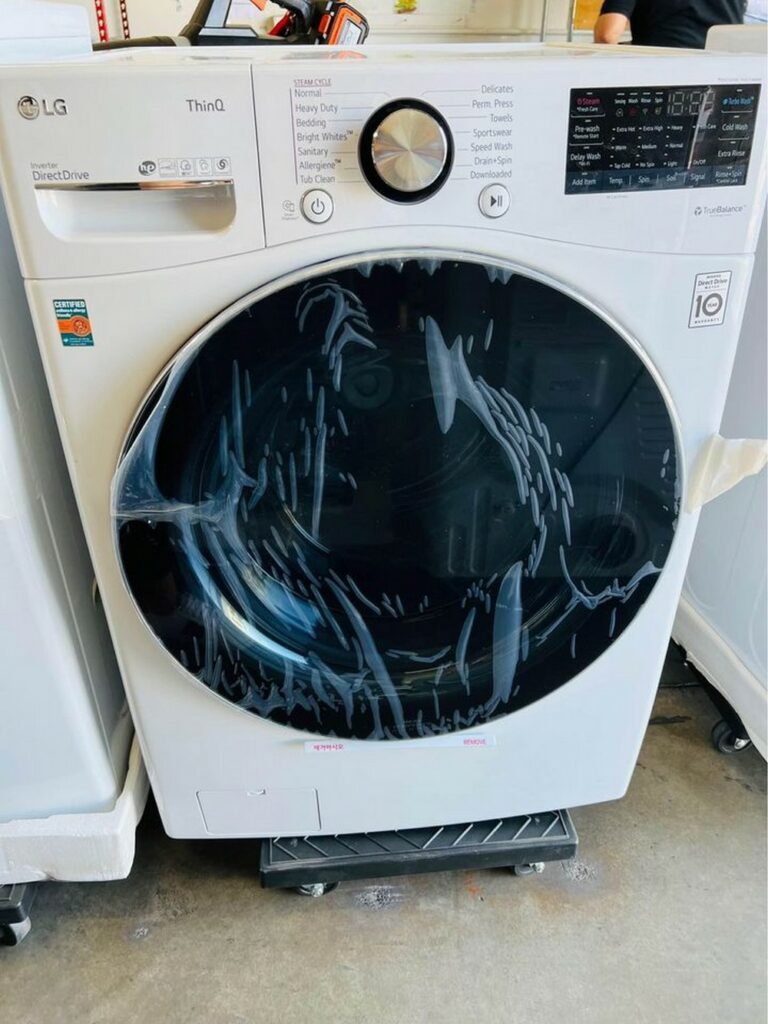
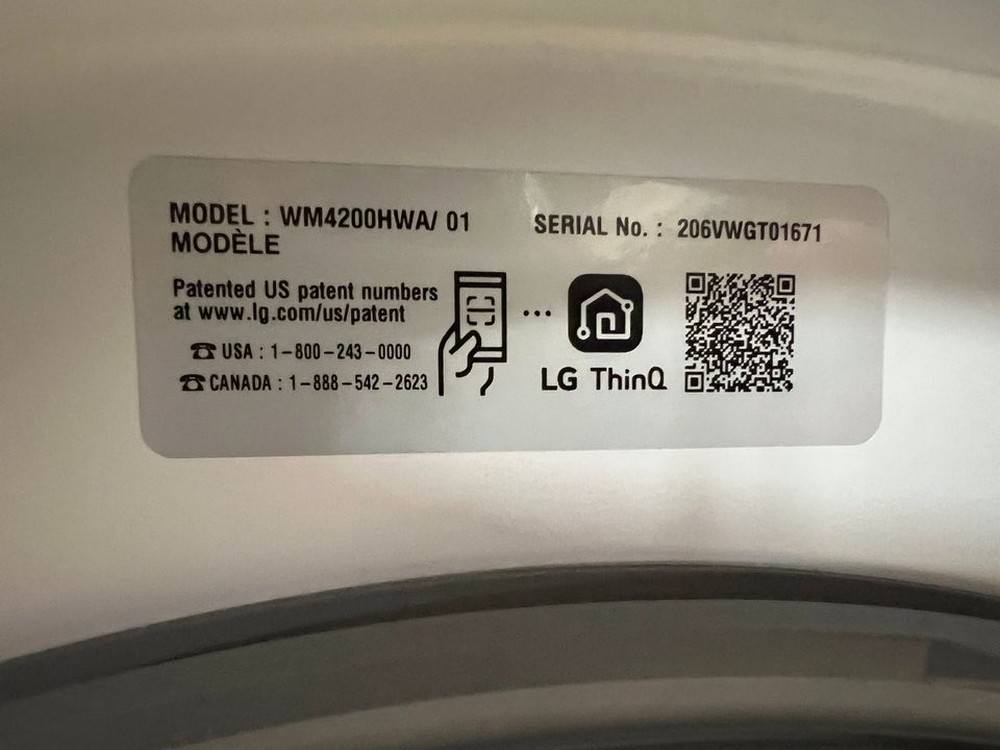
Fact:
The LG 27-inch Ultra Large Capacity Front Load Washing Machine offers 14 different wash cycles, including a SpeedWashCycle that washes loads in about 15 minutes.
In addition:
This LG washing machine model is EnergyStar certified and is very energy-efficient. It has an estimated yearly energy consumption of 105kWh.
2. Maytag Washing Machine MVWC565FW
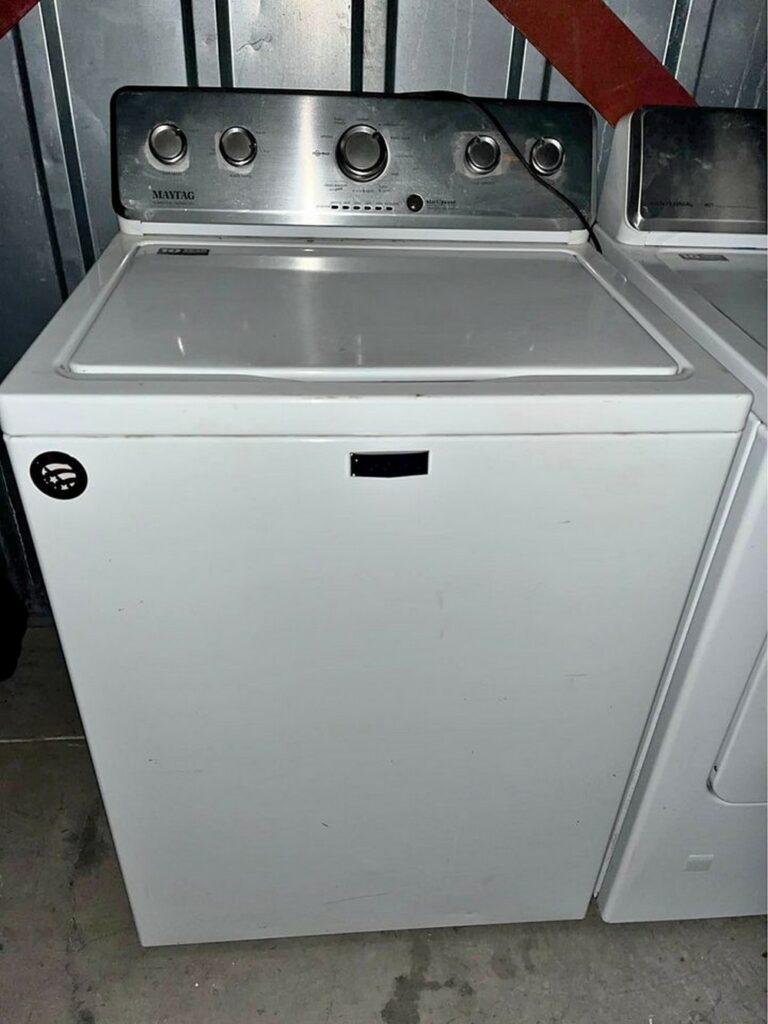
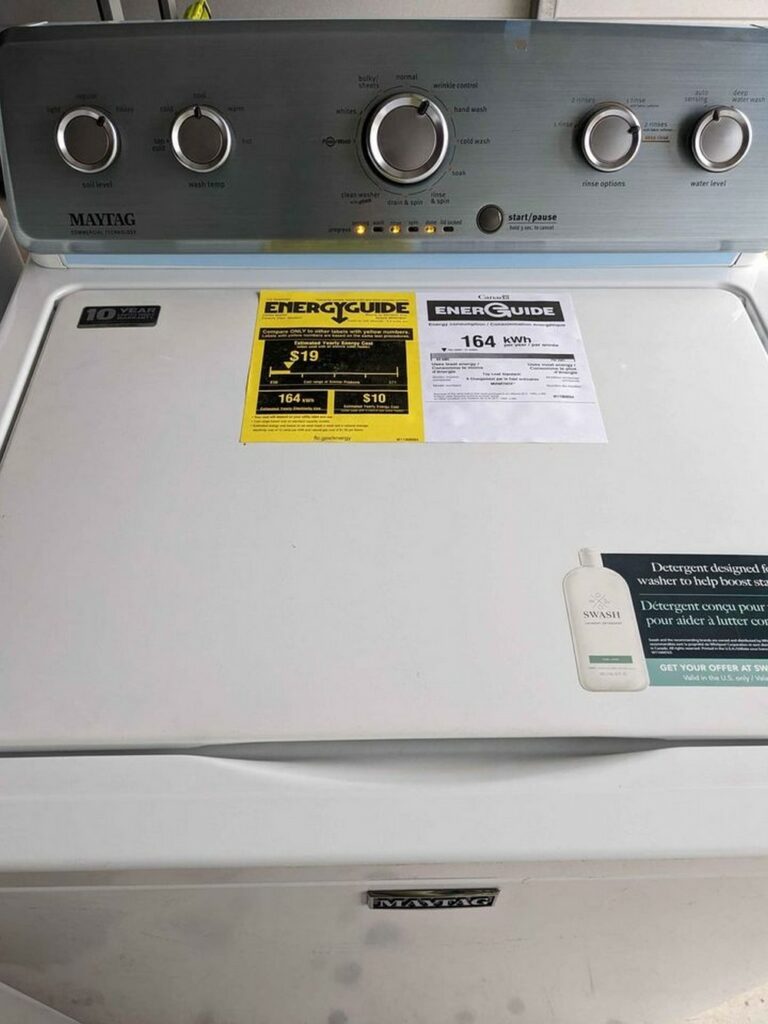
Listen:
This is another energy-efficient washing machine that has a large 4.2 cu. ft. capacity that enables you to do more laundry in less time.
It is not EnergyStar certified, but it has an estimated yearly energy consumption of 164kWh.
3. Samsung Washing Machine WA52A5500AC
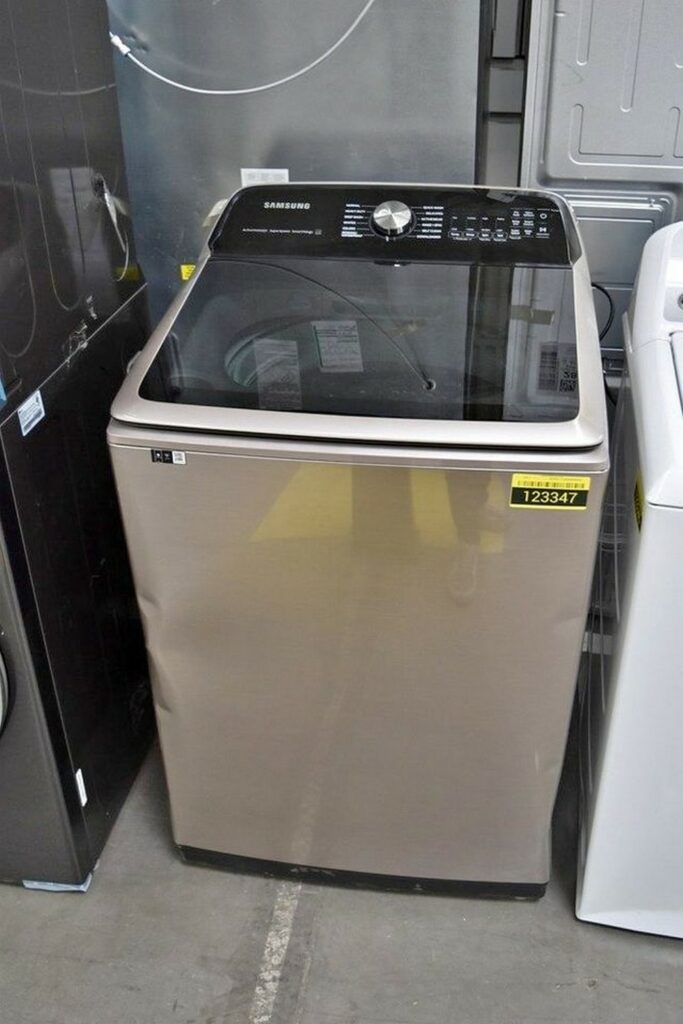
This high-efficiency (HE) washing machine has 12 preset wash cycles and a huge 5.2 cu. ft. steel drum capacity that you can use to wash a large laundry load in under 30 minutes.
It is EnergyStar certified and has a yearly energy consumption of 120kWh.
4. GE Washing Machine GFW148SSMWW
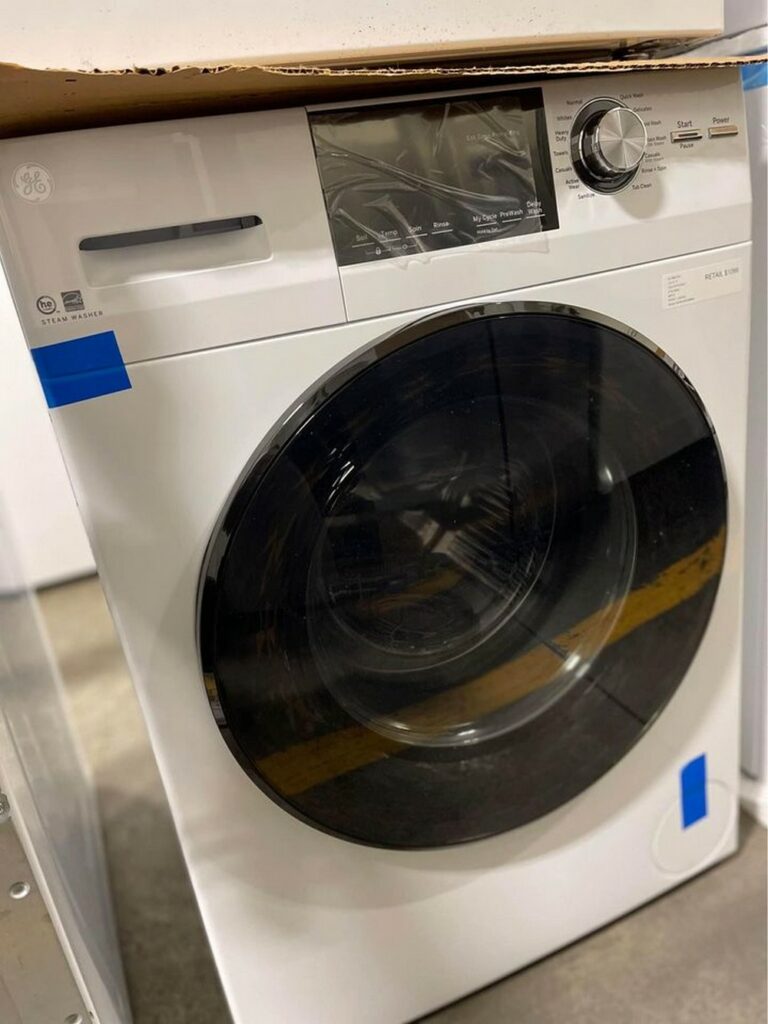
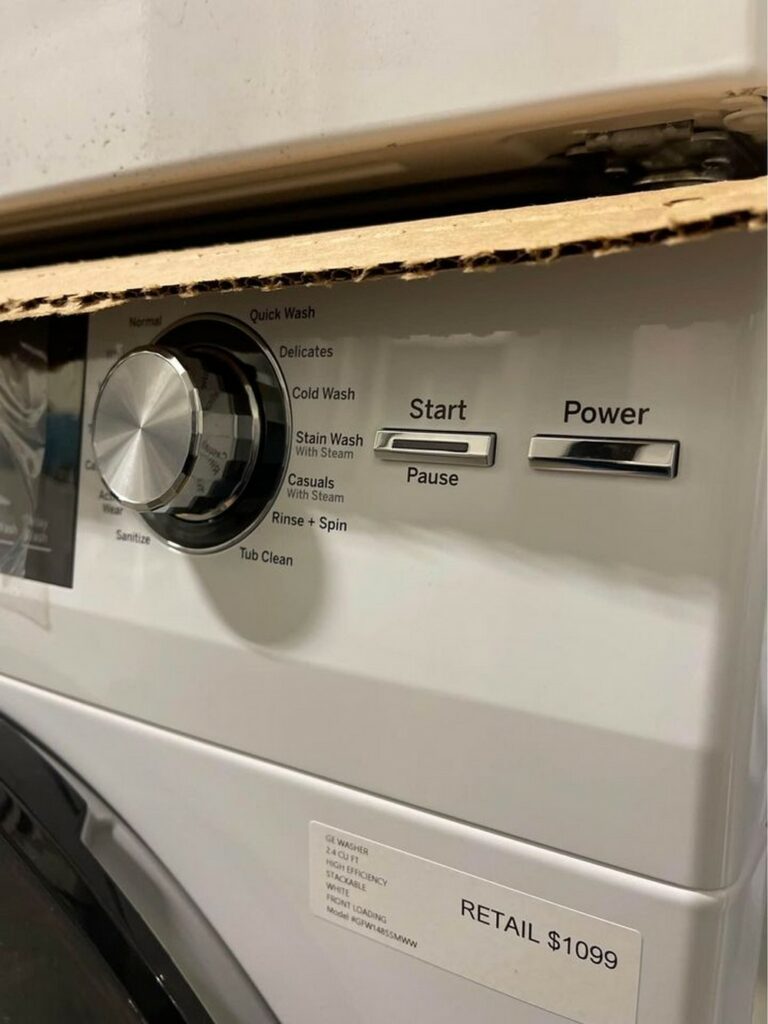
This washing machine has a 2.4 cu. ft capacity and a compact design that doesn’t take up much space in your laundry room. It is also stackable.
The cool part is:
Despite its compact size, the washing machine offers 14 complete wash cycles, including a steam wash option. It is EnergyStar certified with a yearly energy consumption of 120kWh.
5. Electrolux Washing Machine ELFW7537AW
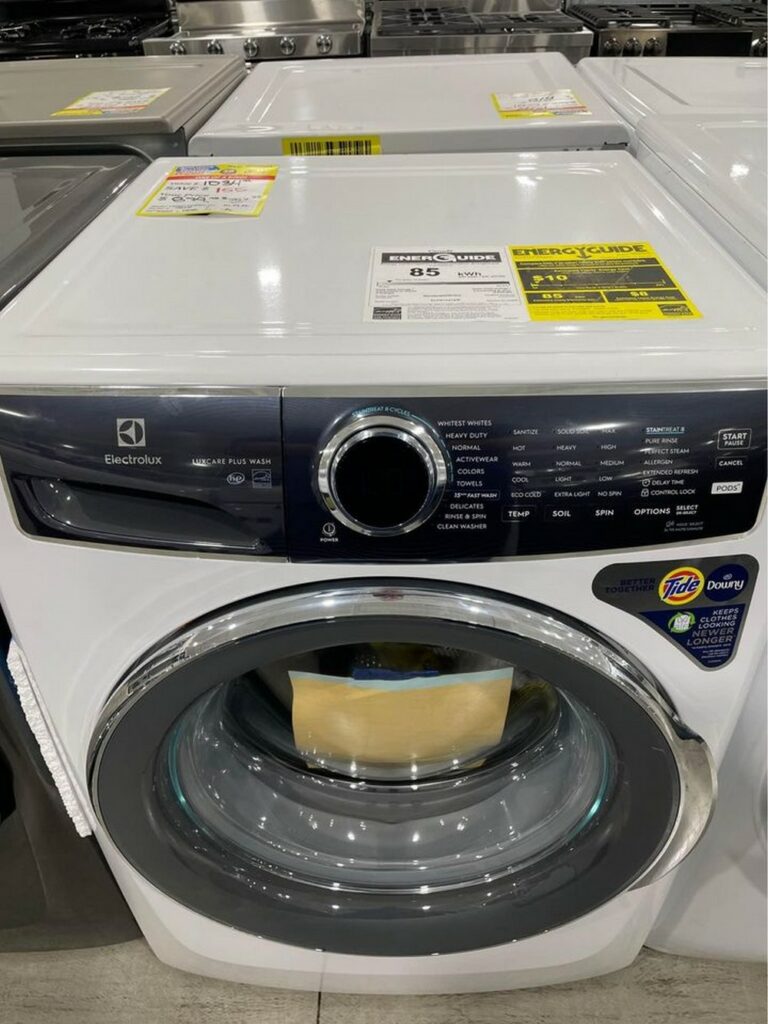
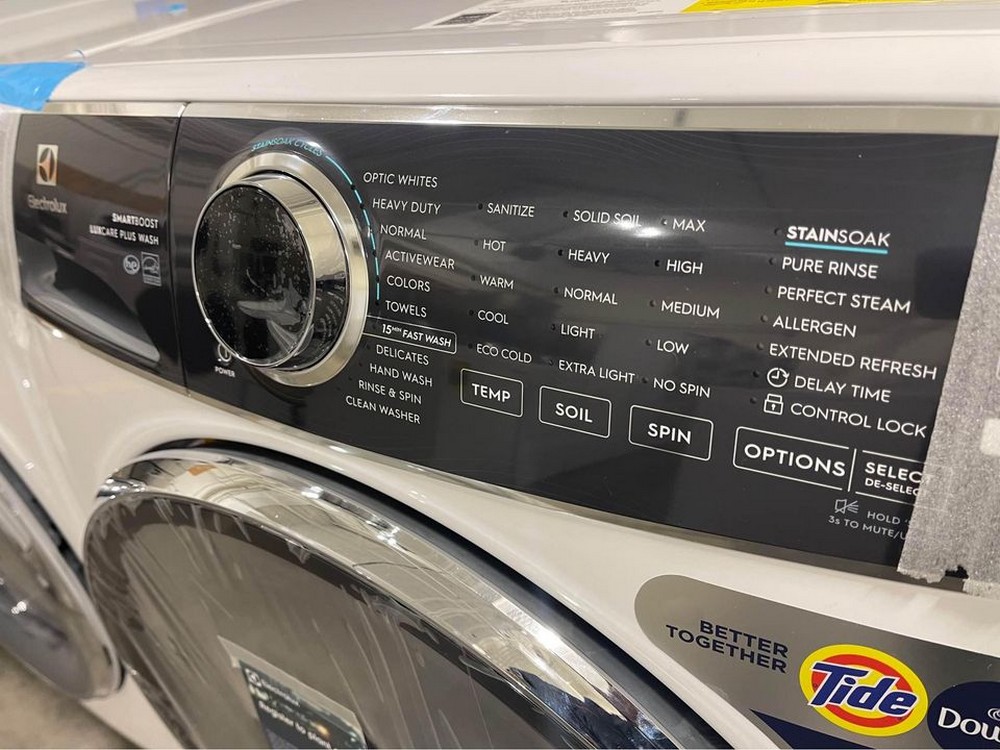
This is a high-efficiency (HE) washing machine with a stainless steel drum capacity of 4.5 cu. ft. It has a very fast wash cycle that lasts for about 15 minutes and offers several advanced features, including a sanitizing feature.
In addition:
It is EnergyStar certified and uses about 85kWh worth of energy annually.
Tips on How to Lower Your Energy Cost
To begin with:
Washing machines are incredible innovations that have made laundry very easy and time-saving. They also provide a drying option, where you can dry your clothes immediately after your wash cycle.
It’s pretty amazing, right?
However:
Washing machines may contribute significantly to increasing the cost of your electricity.
The good part is:
You don’t have to give up just yet; we are going to discuss some really insightful tips on how to operate your washing machine without accruing too much energy costs.
Shall we?
1. Upgrade to Energy Efficient Washing Machines
Note:
It is highly recommended to purchase a new model washing machine because they use nearly 50% less energy than their older counterparts.
It is also important to ensure that your washing machine is EnergyStar certified before you make a purchase.
Additionally:
Many customers commented on how they noticed a reasonable reduction in their electricity bills after doing this.
2. Avoid Using The Heater
Now:
One very important thing you should know is that your washing machine uses about 90% of its total energy to heat water, which can significantly increase your electricity bills over time.
Also:
Using hot water to wash your clothes frequently could cause them to shrink or fade. You could save a considerable amount of money and energy if you use cold water for your routine laundry.
3. Always Turn Off Power Supply After Use
Listen:
You should always remember to unplug your washing machine from its power source immediately after use.
Now:
You might assume your washer automatically turns off when it’s not in use.
But:
These washers are usually on standby mode, and you must turn them off manually.
4. Soak Your Clothes Before Wash
Naturally:
Clothes with tough stains may be difficult to wash, and you may need to run more than one wash cycle to make sure that your clothes are clean.
Luckily:
Soaking these clothes in water and stain removal would help soften these stains, allowing your clothes to get clean in one wash cycle.
Doing this would help reduce the number of wash cycles, which will lower your energy costs.
5. Wash Full Laundry Loads
Ideally:
Your washer would use the same amount of energy regardless of the size of your laundry load. It is best if you wash full laundry loads to minimize the times you’d have to run your washing machine.
Therefore:
Allocate two to three days a week for laundry, and make sure to do all your laundry at once.
Sometimes:
You might have a small size of laundry to do urgently. You can use the quick wash feature on your washing machine that allows you to finish a wash cycle in 15 to 20 minutes.
6. Use Eco or Speed Perfect Mode
Thankfully:
Most washing machines have these features that allow them to operate efficiently while using the least amount of energy possible.
Make sure you use these modes as much as possible if your washer model has them. These modes save power which will help lower your yearly electricity cost.
Conclusion
Let’s recap:
If you are concerned with how much power your washer consumes and looking for ways to cut down electricity costs, what you have to do is simple.
First:
Calculate the number of watts your washing machine uses in a year by simply multiplying the power rating of your washer by the duration of use.
Energy consumption (wattage) = Power rating x Duration of use (usually in hours)
Remember that:
You can get the power rating of your washing machine by consulting the yellow EnergyGuide label on your washing machine.
Some of the things you can do to lower your energy cost are:
- Use cold water for routine laundry.
- Use newer models of washing machines, which are usually 50% more efficient than old ones.
- Purchase EnergyStar Certified washing machines.
- Activate the Eco mode on your washing machine. This helps to reduce the power consumption of your washing machine.
The bottom line is:
You can use these simple strategies to reduce your energy consumption, which will help you save money on your electricity bill. You can also take some of these tips into consideration before you purchase a new washing machine.
Lastly:
If you have any questions or feedback, please let us know in the comment section below.
We would really love to hear from you!
Frequently Asked Questions
Yes, you can use a generator to power your washing machine. You must, however, check that the generator has sufficient watts to start and run your washing machine. Connecting your washing machine to a stabilizer is also recommended to protect it from current fluctuations. Furthermore, this is only possible if your washing machine is a new model and is energy-efficient.
The wattage of an electric clothes dryer depends on its model. Dryers consume between 1800 – 5000 watts of energy, which equates to 1.8 to 5 kWh of electricity. You should note that your clothes dryer uses more watts than your washing machine.
A washing machine uses about 400 to 1500 watts. The exact wattage of your washing machine is highly dependent on the model. Other factors that could determine the energy consumption of your washing machine are utilizing the heater, running numerous wash cycles, and using old models of washing machines. A washing machine uses less electricity than an air conditioner or a clothes dryer.
Your washing machine should have a circuit size of 120 volts and 20 amps. However, if your washer has a very high kWh, you should consider getting a bigger circuit size. You can determine the exact amp your washer needs by consulting the EnergyStar Label on your washer or your owner’s guide.

